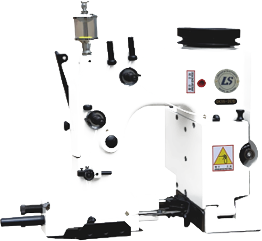what does a overlocker do
What Does an Overlocker Do?
An overlocker, often referred to as a serger, is an essential tool in the world of sewing. It is specifically designed to create clean, professional finishes on seams and hems, making it a favorite among both hobbyists and professional tailors. Understanding the functionality of an overlocker can enhance your sewing experience and improve the quality of your projects significantly.
The Basics of Overlocking
At its core, the overlocker operates by trimming the fabric edges while simultaneously stitching them together. Unlike a standard sewing machine, which primarily uses a single needle and thread, an overlocker typically employs multiple threads (usually three or four) to create a strong, stretchy seam. This is particularly important for knit fabrics that require more flexibility than woven fabrics.
The machine’s unique design allows it to sew, trim, and finish edges in a single step. This efficiency not only saves time but also results in a more polished look, which is especially beneficial for garments that undergo frequent wear and stretch.
Key Features
1. Stitch Types Overlockers can perform various stitch types, including the traditional overlock stitch, rolled hem, and flatlock stitch. Each type serves different purposes - Overlock Stitch Great for basic seam finishing, this stitch helps prevent fraying and maintains the fabric’s stretch. - Rolled Hem Ideal for delicate fabrics or decorative edges, the rolled hem creates a narrow finish. - Flatlock Stitch This stitch is often used for topstitching and decorative seams, providing a flat finish that is smooth against the skin.
2. Cutting Blade Overlockers come equipped with a cutting blade that trims the fabric as it is sewn. This feature is crucial for achieving even and neat edges. The blade can usually be adjusted or disengaged, offering flexibility based on the desired finish.
3. Differential Feed One of the standout features of an overlocker is its differential feed system, which ensures that both layers of fabric move at the same rate. This prevents stretching or puckering, a common issue when working with knits and slippery fabrics. The differential feed can be adjusted, allowing the user to manage fabric tension more effectively.
4. Thread Tension Unlike traditional sewing machines, where thread tension can be a bit finicky, most overlockers have simplified tension settings. This means that users can easily adjust the tension for different fabric weights, ensuring a consistent stitch quality.
what does a overlocker do

Advantages of Using an Overlocker
The benefits of using an overlocker in sewing projects are numerous. One of the primary advantages is the finished appearance of the garment. Overlocked seams look professional and can withstand more stress compared to traditional sewing methods. Furthermore, the technique significantly reduces fabric fraying, extending the lifespan of the garment.
Overlockers are also incredibly efficient. They allow for faster sewing, especially when finishing edges or completing seams. This is particularly advantageous for those working on larger projects or in a production environment.
Another compelling feature of overlockers is their versatility. They are suitable for a wide range of fabrics, including knits, wovens, and even delicate materials like chiffon or silk. This adaptability makes them invaluable to anyone who loves to sew, regardless of expertise level.
Considerations Before Purchasing
While overlockers offer numerous benefits, there are some considerations to keep in mind before making a purchase. They can be more expensive than standard sewing machines, and the learning curve may be steeper, especially for beginners. However, investing in an overlocker can pay off in terms of time saved and the quality of finished projects.
Additionally, maintenance is key. Regular cleaning and periodic servicing are essential to keep the machine running smoothly. Understanding basic troubleshooting techniques, such as re-threading and adjusting tensions, will also enhance your experience.
Conclusion
In conclusion, an overlocker is a powerful addition to any sewing room, providing not only speed and efficiency but also exceptional finishes. Its unique features, such as multiple thread options, a cutting blade, and differential feed, make it an indispensable tool for anyone looking to elevate their sewing game. Whether you are sewing garments for yourself, producing items for sale, or simply enjoying the art of sewing, an overlocker can help you achieve beautifully finished projects that stand the test of time.
-
Boost Production Efficiency with a Pattern Sewing MachineNewsAug.29,2025
-
Industrial Excellence with the Best Heavy Duty Sewing MachineNewsAug.29,2025
-
Precision and Power with the Best Pattern Sewing MachineNewsAug.29,2025
-
Reliable Bulk Packaging Starts With the Right FIBC Sewing MachineNewsAug.29,2025
-
Advanced Packaging Solutions: Elevate Productivity with Jumbo Bag Sewing Machine and Industrial Stitching EquipmentNewsAug.29,2025
-
High-Performance Solutions for Bulk Packaging: FIBC Sewing Machine and MoreNewsAug.29,2025
-
Maximize Efficiency with an Industrial Cylinder Arm Sewing MachineNewsAug.28,2025


























